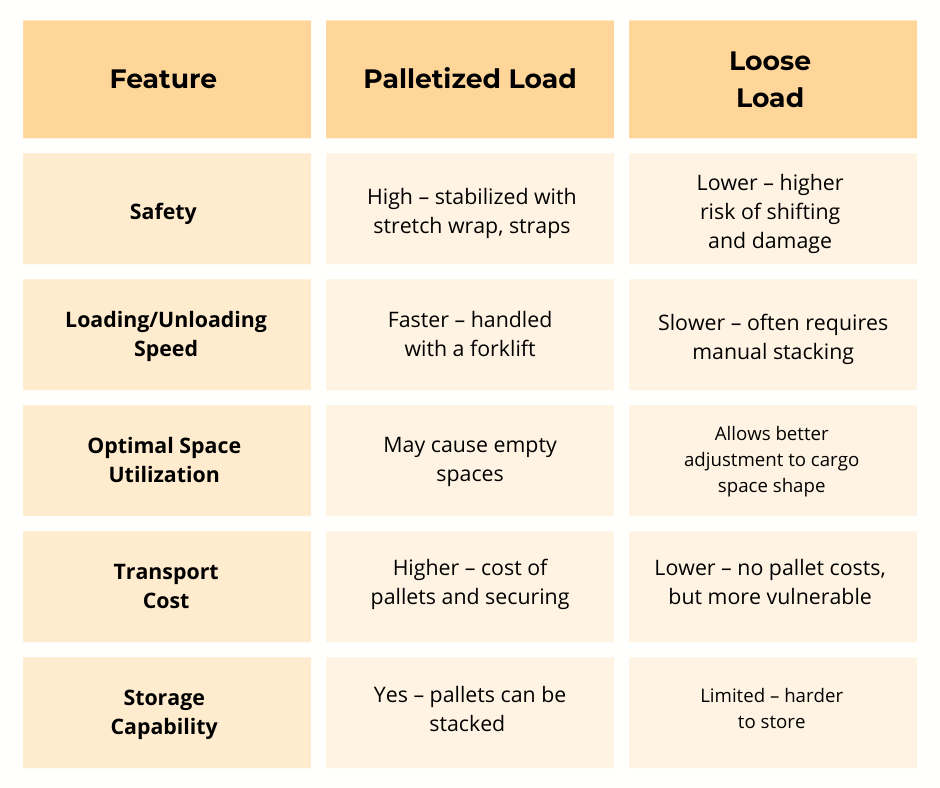When Does Palletizing Cargo Make Sense?
_1.png)
Efficient load planning is a key element of logistics and transportation. Depending on the type of goods and available space (pallet, container, trailer), you can choose between palletization or loose loading. Each method has its pros and cons learn when to apply each and how the SmartLoad app can help you optimize your transport.
What Is Palletization and When to Use It?
Palletization is the process of stacking goods on pallets to facilitate transportation, warehousing, and securing the load. It is a standard solution in logistics and manufacturing.
Best for palletization:
-
✅ Standard-sized goods easy to stack and stabilize.
-
✅ Easy loading/unloading pallet trucks and forklifts can be used.
-
✅ Load requires secure protection stretch wrap, strapping, corner protectors.
-
✅ Storage in high-rack warehouses is required pallets can be stacked.
Pros and Cons of Palletized Cargo
✅ Advantages:
-
Faster handling standard dimensions allow quick forklift operation.
-
Cargo safety well-protected from mechanical damage.
-
Efficient warehouse space usage stackable pallets.
-
Speeds up loading/unloading especially with large quantities.
❌ Disadvantages:
-
Higher transport weight due to pallets and additional packaging.
-
Inefficient space use gaps may occur between pallets.
-
Additional costs for pallets and protective materials, especially non-returnable ones.
When Is Loose Loading a Better Option?
Loose loading is more effective when:
-
✅ Transporting irregularly shaped items like pipes, furniture, metal sheets.
-
✅ Dealing with bulk or liquid materials grain, oil, cement.
-
✅ Shipping small packages better arranged without pallets.
-
✅ Avoiding extra costs or return logistics for pallets.

How to Choose the Best Loading Method?
🔹 Choose palletization when:
-
You need secure transport with minimal damage risk.
-
You're transporting large quantities of uniform products.
-
You want fast and easy handling.
-
The goods require warehouse storage.
🔹 Choose loose loading when:
-
Your cargo is large or irregular in shape.
-
You're handling bulk or liquid goods.
-
You want to maximize space and reduce costs.
SmartLoad Intelligent Load Planning
Whether you choose palletization or loose loading, SmartLoad helps you:
-
📦 Optimize cargo placement in trailers, containers, or pallets.
-
🧠 Analyze various loading scenarios based on cargo type and space.
-
🖼️ Visualize the loading plan for better coordination with drivers and logistics teams.
Plan your transport smarter with SmartLoad - improve safety, save time, and make the most of your available space.
📖 Read the previous article: Preparing for Black Friday and Cyber Monday in the TSL Industry.